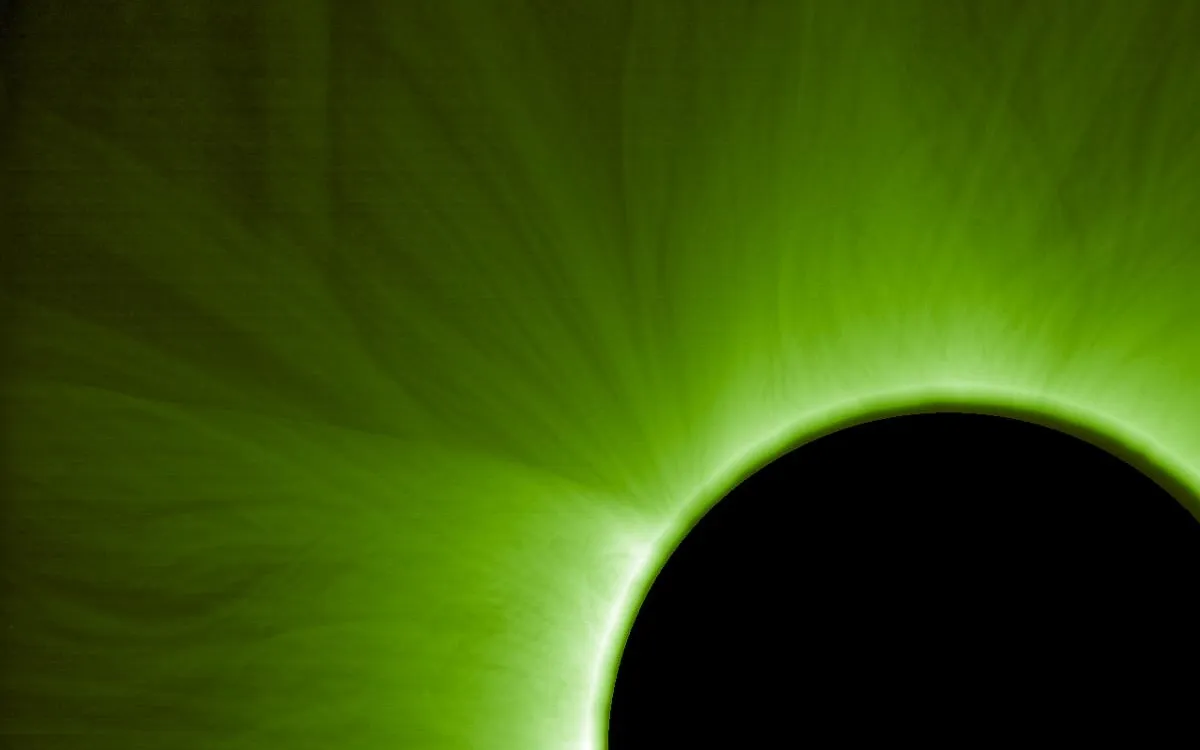
On June 16, 2025, the European Space Agency (ESA) celebrated a significant milestone with the unveiling of the first images captured by its groundbreaking Proba-3 mission, showcasing the Sun’s outer atmosphere, known as the solar corona. This innovative mission comprises two satellites that can operate in perfect formation, creating what is referred to as an ‘artificial total solar eclipse’ in orbit. The extraordinary images produced from this endeavor not only highlight the capabilities of formation flying technologies but also promise to enhance our understanding of the Sun and its mysterious atmosphere.
In March 2025, the Proba-3 mission achieved an unprecedented feat in space exploration. Its two spacecraft, named the Coronagraph and the Occulter, successfully flew 150 meters apart in flawless formation for several hours without any ground control intervention. This remarkable synchronization allows the pair to maintain their relative position with an accuracy of just one millimeter, a feat made possible by a suite of cutting-edge navigation and positioning technologies.
The formation flying capabilities of Proba-3 enable the two spacecraft to create artificial total solar eclipses by aligning with the Sun. The Occulter spacecraft carries a 1.4-meter disc that effectively blocks the Sun’s bright light, allowing the Coronagraph spacecraft to capture detailed images of the solar corona. This process casts an 8 cm shadow across the Coronagraph’s optical instrument, known as ASPIICS (Association of Spacecraft for Polarimetric and Imaging Investigation of the Corona of the Sun), which was developed by ESA in collaboration with the Centre Spatial de Liège in Belgium. When the Sun's light is obscured, ASPIICS can capture uninterrupted images of the solar corona, which is crucial for studying solar phenomena such as the solar wind and coronal mass ejections (CMEs).
The solar corona is intriguing for its extreme temperatures, surpassing one million degrees Celsius, which is significantly hotter than the Sun’s surface. This paradox has been a long-standing question within the scientific community. The ASPIICS instrument is positioned to help unravel this mystery by providing close observations of the corona, detecting fainter features thanks to its minimal stray light interference. Joe Zender, the Proba-3 project scientist, expressed enthusiasm about the initial data from ASPIICS, emphasizing its role in addressing longstanding questions about our Sun.
Additionally, the Proba-3 mission includes the Digital Absolute Radiometer (DARA), which measures the total solar irradiance, providing insights into the energy output of the Sun. Another instrument, the 3D Energetic Electron Spectrometer (3DEES), focuses on detecting electrons within Earth's radiation belts, analyzing their origin and energy levels, thus contributing to a more comprehensive understanding of space weather.
Andrei Zhukov, Principal Investigator for ASPIICS at the Royal Observatory of Belgium, expressed excitement over the mission's first images, highlighting the success achieved on the initial attempt. The images are processed by the ASPIICS Science Operations Centre, where a dedicated team of scientists creates operational commands based on community requests. Each full image is composed of three separate captures with varying exposure times, enabling a detailed view of the corona.
Unlike natural solar eclipses, which occur just once or twice a year and last for mere minutes, Proba-3 can generate artificial eclipses every 19.6 hours, sustaining them for up to six hours. This unique capability allows for extended observation and a wealth of data collection.
Proba-3's impressive images are not only pivotal for immediate scientific inquiry but also revolutionize the simulation of the solar corona through computer models. Jorge Amaya, Space Weather Modelling Coordinator at ESA, noted that the observations from Proba-3 will significantly enhance existing models used to study solar phenomena. These models, which have been developed by various institutes across Europe, can now be refined with real data, improving our understanding of the solar processes that impact Earth.
One notable example is the COCONUT software developed by KU Leuven, which integrates with ESA's Virtual Space Weather Modelling Centre. This collaboration aims to provide a holistic view of solar activity and its implications for both citizens and industries.
The Proba-3 mission, spearheaded by the ESA, is a collaborative effort involving a consortium managed by Spain’s Sener and participation from over 29 companies across 14 countries. Major contributions come from GMV and Airbus Defence and Space in Spain, as well as Redwire Space and Spacebel in Belgium. The mission was successfully launched on December 5, 2024, aboard a PSLV-XL launcher from the Satish Dhawan Space Centre in Sriharikota, India.
For further information about the Proba-3 mission and its groundbreaking discoveries, please visit the Proba-3 Media Kit and Frequently Asked Questions page.